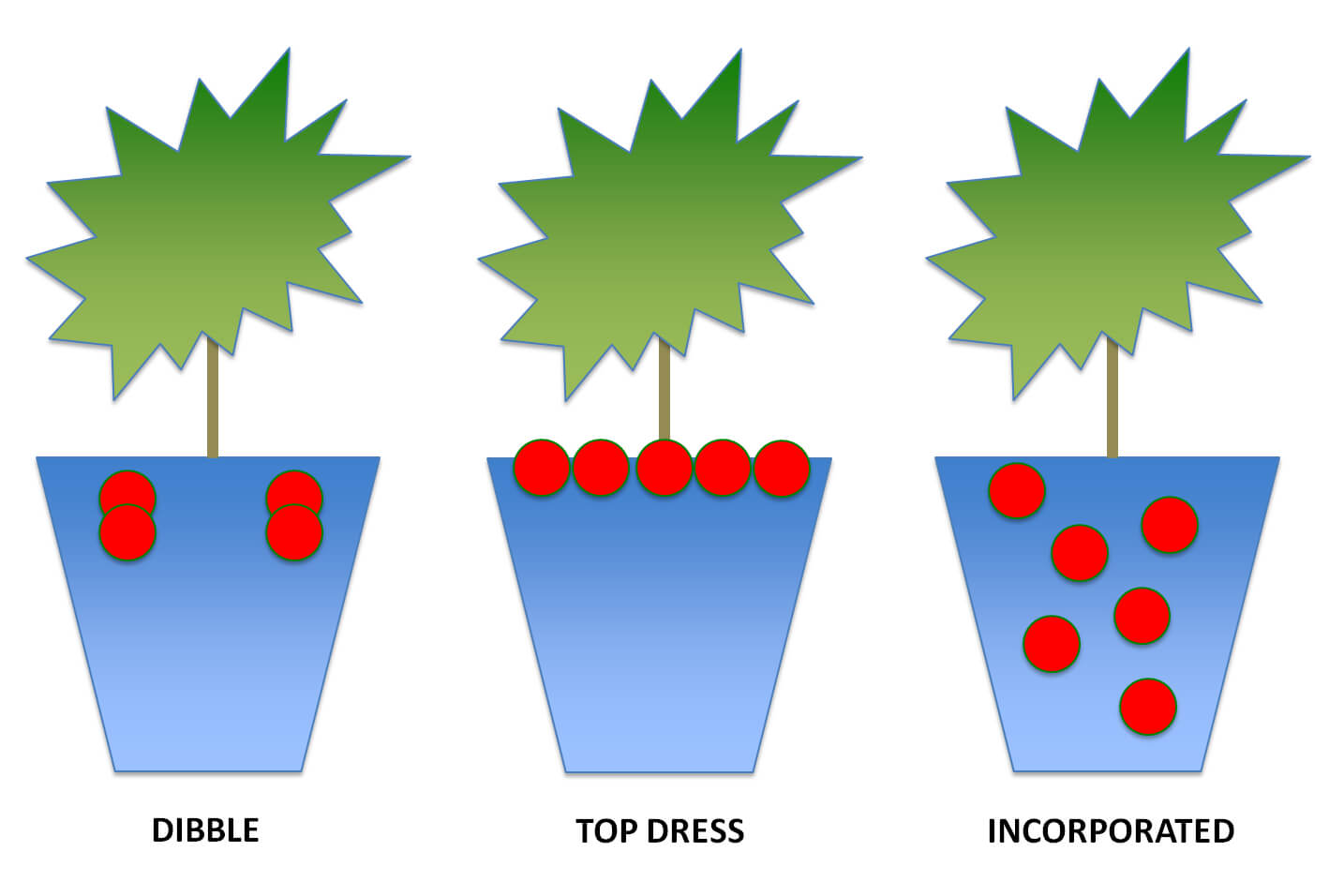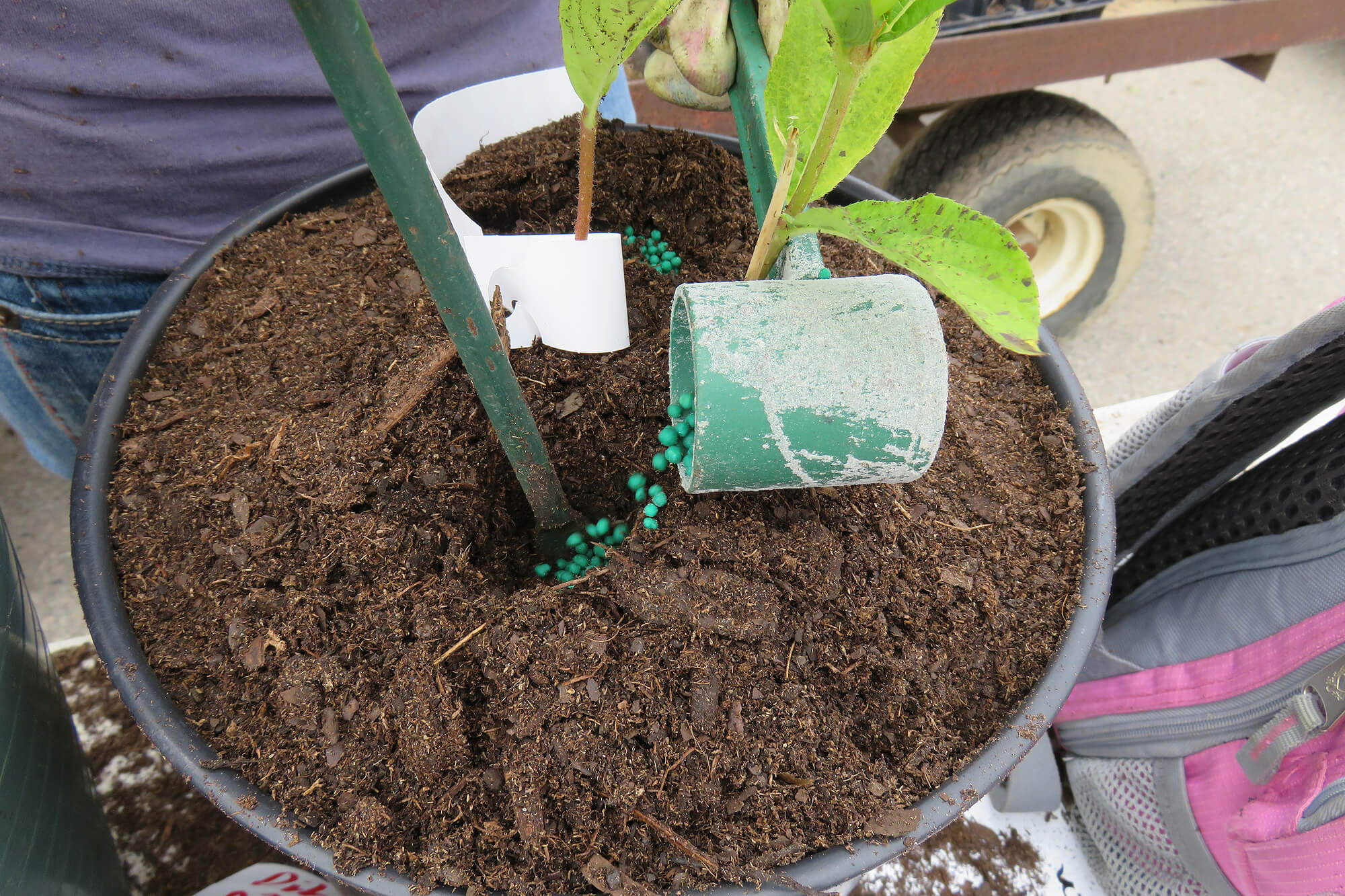January 15, 2017

Figure 1: Field studies compared various fertilizer applications.
Nursery growers demonstrate ways to conserve nutrient inputs
A recent study of fertilizer placement techniques in Ontario grown nursery stock shows subsurface applications of fertilizer reduces the required amount of fertilizer inputs and conserves nutrients in the crop.
The topic of nutrient conservation is a very important one as agricultural producers evaluate their fertilizer and water use. Farmers are continuously implementing cost-effective ways to reduce their environmental footprint while producing quality product. Ontario nursery growers have been investigating sub-surface fertilizer placement techniques for years, thanks to pioneering research conducted by Dr. Calvin Chong and Dr. Glen Lumis of the University of Guelph.
An Ontario group of researchers, including: PhytoServ, Ontario Ministry of Agriculture, Food and Rural Affairs (OMAFRA), Soil Resource Group, Vineland Research and Innovation Centre and innovative nursery growers recently collaborated to perform field studies comparing surface-applied (topdressing), subsurface applied (dibbling) and incorporated fertilizer (Figure 1, 2) to container grown nursery crops. Subsurface applications of controlled release fertilizers (e.g. dibbling) resulted in the lowest nutrient losses, particularly nitrogen and phosphorus, as observed during pour-through tests (Figure 3). In addition, less fertilizer was used and the resulting plants were fully saleable at the end of the trial.
 Figure 2: Dibbling resulted in the lowest nutrient losses.
Figure 2: Dibbling resulted in the lowest nutrient losses.
 Figure 4: The impact of fertilizer placement on root structure.
Figure 4: The impact of fertilizer placement on root structure.
The topic of nutrient conservation is a very important one as agricultural producers evaluate their fertilizer and water use. Farmers are continuously implementing cost-effective ways to reduce their environmental footprint while producing quality product. Ontario nursery growers have been investigating sub-surface fertilizer placement techniques for years, thanks to pioneering research conducted by Dr. Calvin Chong and Dr. Glen Lumis of the University of Guelph.
An Ontario group of researchers, including: PhytoServ, Ontario Ministry of Agriculture, Food and Rural Affairs (OMAFRA), Soil Resource Group, Vineland Research and Innovation Centre and innovative nursery growers recently collaborated to perform field studies comparing surface-applied (topdressing), subsurface applied (dibbling) and incorporated fertilizer (Figure 1, 2) to container grown nursery crops. Subsurface applications of controlled release fertilizers (e.g. dibbling) resulted in the lowest nutrient losses, particularly nitrogen and phosphorus, as observed during pour-through tests (Figure 3). In addition, less fertilizer was used and the resulting plants were fully saleable at the end of the trial.
 Figure 2: Dibbling resulted in the lowest nutrient losses.
Figure 2: Dibbling resulted in the lowest nutrient losses.
The team also investigated the use of additives to help adhere fertilizer products to the surface of the media. The Polyon Cohesion product helped to keep the fertilizer in place and ultimately prevented fertilizer spillage caused by wind throw. Media additives alum and wollastonite were found to conserve some nutrients but caused increased losses of others. In addition, their use requires additional ingredient costs and labour costs for application, which may not make economic sense.
Fertilizer placement method significantly impacted root structure and root growth in the pot (Figure 4). Roots tended to proliferate in media where the greatest concentration of nutrients could be found. This effect may impact root growth when the nursery crop is planted out into the landscape or forest, especially for shade trees. Further research is required to evaluate this treatment effect.
Fertilizer placement method is not a simple management tool to reduce nutrient content in container production runoff. Several factors must be considered when choosing fertilizer placement. The most conservative fertilizer (e.g. subsurface application) placement method for nutrient conservation may not be appropriate for all nursery crops because of differences in potting system, crop needs, crop growth stage, root morphology, production cycle, or irrigation method.
Automation techniques and post-planting application methods need to be developed to help make subsurface applications more economically efficient and feasible for commercial production systems. More research and development will be required to help the industry incorporate these nutrient conservation techniques into commercial production systems. A summary report of this research is available through Landscape Ontario and PhytoServ (see gfl.me/h3dO). This research was supported by the Ontario Ministry of Agriculture, Food & Rural Affairs (OMAFRA).
Fertilizer placement method significantly impacted root structure and root growth in the pot (Figure 4). Roots tended to proliferate in media where the greatest concentration of nutrients could be found. This effect may impact root growth when the nursery crop is planted out into the landscape or forest, especially for shade trees. Further research is required to evaluate this treatment effect.
Fertilizer placement method is not a simple management tool to reduce nutrient content in container production runoff. Several factors must be considered when choosing fertilizer placement. The most conservative fertilizer (e.g. subsurface application) placement method for nutrient conservation may not be appropriate for all nursery crops because of differences in potting system, crop needs, crop growth stage, root morphology, production cycle, or irrigation method.
Automation techniques and post-planting application methods need to be developed to help make subsurface applications more economically efficient and feasible for commercial production systems. More research and development will be required to help the industry incorporate these nutrient conservation techniques into commercial production systems. A summary report of this research is available through Landscape Ontario and PhytoServ (see gfl.me/h3dO). This research was supported by the Ontario Ministry of Agriculture, Food & Rural Affairs (OMAFRA).
 Figure 4: The impact of fertilizer placement on root structure.
Figure 4: The impact of fertilizer placement on root structure.
